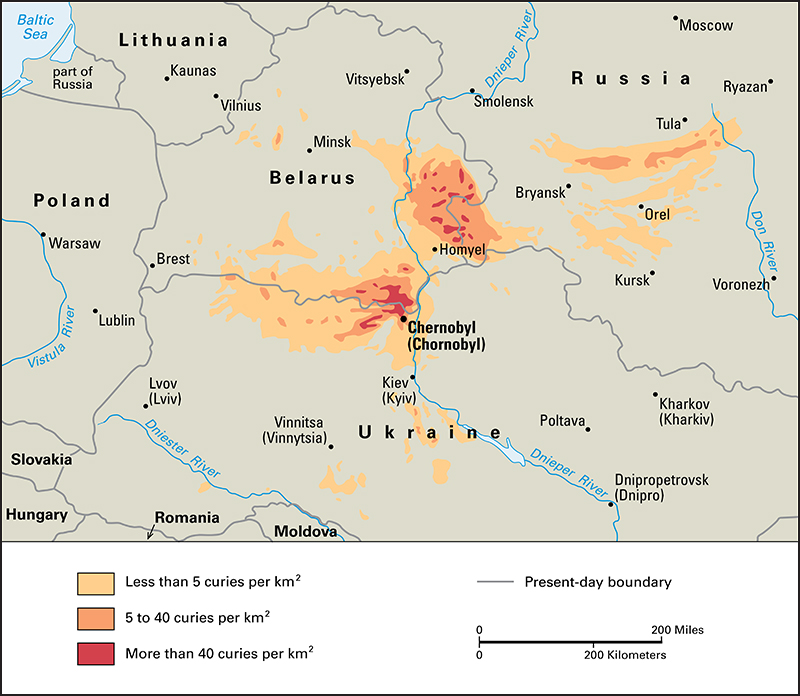Chernobyl disaster, the worst nuclear accident in history, occurred on April 26, 1986, at the nuclear power station in Chernobyl (now Chornobyl), Ukraine, which was then part of the Soviet Union. The disaster caused numerous deaths and injuries and widespread environmental contamination.


In 1986, the Chernobyl plant had four nuclear reactors (devices that produce and control nuclear energy) in service. On the night of April 25, operators shut off several safety systems and began to power down the fourth reactor for a test of the plant’s emergency electrical power supply. The test began shortly after 1 a.m. on April 26. A power surge caused fuel in the reactor to overheat, resulting in a steam explosion and fire. The explosion and fire produced a radioactive cloud more than 3,280 feet (1,000 meters) in height, and radioactive substances spread over parts of what are now Ukraine, Russia, and Belarus. Winds carried the radioactive material into northern and central Europe.
Soviet leaders concealed the accident from the public for nearly two days and refused outside help. Eventually, officials evacuated the nearby towns of Chernobyl and Prypyat (now Prypiat). Cleanup workers covered the reactor with a concrete shell.
Soviet officials reported that 31 people died from radiation sickness or burns and that more than 200 others were seriously injured. However, experts believe the total number of deaths from the aftereffects of the disaster will continue to grow significantly. Fallout (radioactive material) from the accident caused a number of health and environmental problems. Children who were exposed to fallout experienced an increased rate of thyroid cancer, and cleanup workers suffered skin diseases, respiratory ailments, and heart problems. The Ukrainian government shut down Chernobyl’s last reactor in 2000. In 2016, a new steel structure was moved over the remains of the fourth reactor to better contain the radioactive material inside.
See also Fallout; Nuclear energy (Safety concerns); Radiation (Effects of radiation).
